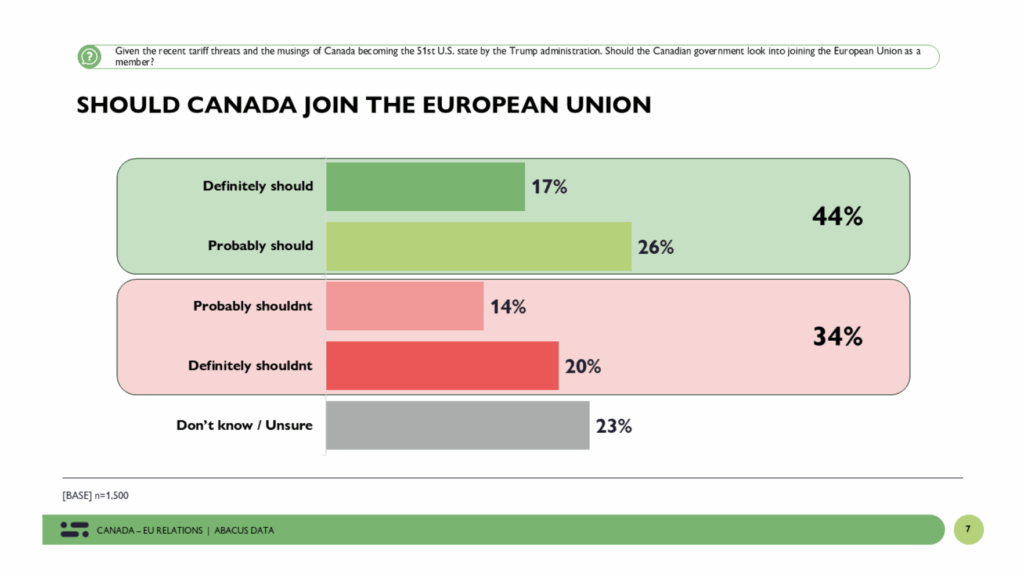Canada joining the EU is becoming less and less unthinkable, writes Portfolio.hu in the wake of a deal signed by Canadian Prime Minister Mark Carney signed a deal with the EU on Monday.
The deal centers around shifting Canada’s defense and security ties away from the United States, although clean energy initiatives and trade were also front and center.
On defense, Canada will significantly increase its defense spending in tandem with European NATO countries, in line with the 5 percent defense budget initiative at the ongoing summit in The Hague.
The agreement also states that Canada can participate in the EU’s new defense spending increase programs under the hundreds of billions of euros ReArm Europe initiative.
According to the joint statement released Monday evening, Ottawa will cooperate with Brussels on the EU’s €150 billion Security Action for Europe (SAFE ) plan, but it does not specify what specific rights the country will have.
European Council President António Costa said that while NATO remains the “cornerstone” of collective defense, the agreement with Canada will significantly accelerate greater military preparedness.
Commission President Ursula von der Leyen said: “This is just the beginning. It will be good for our industries, it will be good for our people, and it will be good for transatlantic security capabilities.”
The signed agreement also mentions Canada participating in the Permanent Structured Cooperation ( PESCO ), which ensures cooperation between the national militaries of the member states.
Trade in goods between the two has increased significantly, by around 63 percent, in the past 7-8 years, after the CETA agreement came into force in 2017, which has now eliminated 99 percent of tariffs between the two countries. However, not all member states have ratified CETA: Belgium, Bulgaria, Cyprus, France, Greece, Hungary, Ireland, Italy, Poland, and Slovenia.
strengthening and securing supply chains, as well as investments in the procurement of critical assets (e.g. semiconductors) and raw material extraction.
Canada has significant reserves of metals and oil, and its advanced machinery and pharmaceutical industries complement the EU’s needs well, notes Portfolio.
On green energy, the goal was to triple the world’s renewable energy production capacity by 2030 and double the annual volume growth of energy efficiency developments. Continued cooperation on nuclear initiatives was also a key focus.
Other areas of collaboration include removing regulatory barriers to food trade and labor migration, diversifying the energy supply chain, strengthening and securing supply chains, and investing in the procurement of critical assets (e.g., semiconductors) and raw material extraction.
Further areas covered were AI, cybersecurity, academic freedom, and judicial policy, as well as Canada’s possible participation in the Horizon and Erasmus+ programs.
In the long term, says Portfolio, Canada’s formal accession in some form cannot be ruled out, although it is a long and possibly unrealistic process.
A poll conducted by Abacus in March clearly shows that the Canadian population is increasingly open to the European Union, with 44 percent of those surveyed saying they “definitely” or “probably” should join the EU, and only 20 percent categorically against it.

The post Could Canada ultimately join the EU? Maybe not, but Brussels and Ottawa are getting cozy appeared first on Remix News.
Remix News





 T1
T1


